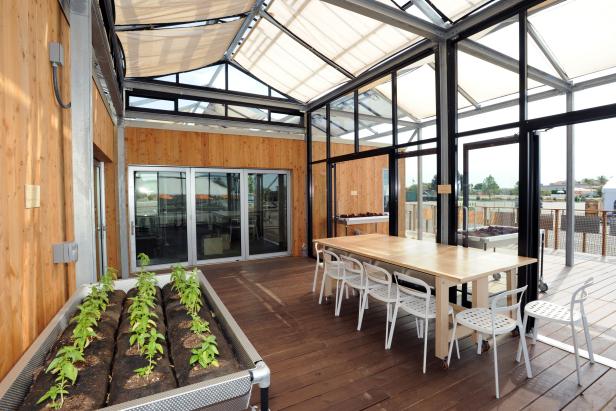Think of all the ways you wish your house was more efficient, more minimalist, more sustainable, or, maybe, more mobile. Imagine buying that home at IKEA, in a kit you could assemble yourself.
Chances are, there’s a team of students working to solve your housing woes right now, for the 2017 Solar Decathlon, sponsored by the U.S. Department of Energy.
A team of students from the University of California at Berkley and University of Denver has designed a house model that can be stacked three units high to accommodate multiple families on long, skinny infill lots in urban areas, where a more traditional house likely wouldn’t fit.
Their design, called RISE, has features like air-filtering countertops, wool insulation, a rooftop deck accessed by a wide staircase, and a flexible floor plan, thanks to moving walls homeowners can adjust to triple the living room space and shrink the bedroom when desired. The team has been working on the project for two years. In early 2016, the Berkley students split up into groups with drawing materials and pieces of cardboard to start building model designs, says 21-year-old Joan Gibbons, a junior
civil engineering major. She and many other Berkley students are spending part of the summer in Colorado with University of Denver students to build and rebuild the house in preparation for the competition in October. Afterward, RISE will be donated, and real families will live in the house.
From Oct. 5 to 15, the teams will showcase their homes in Denver at the 61st and Peña Station on the University of Colorado commuter rail. They’ll put their homes to the test for tasks like driving an electric car charged via the home’s solar system, and compete for cash prizes up to $300,000.
The public is invited to attend the competition to learn more about sustainable design and net-zero housing, and to tour these innovative homes. The U.C. Berkley and Denver team plans to host family game nights in their house, to show people what it would really be like to live there.
“Our design provides awareness of what’s [possible],” says Jack Ross, the 26-year-old University of Denver grad student leading the team. “We’re teaching people about technologies they didn’t know they wanted.”

